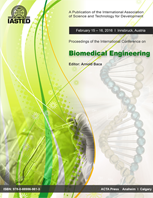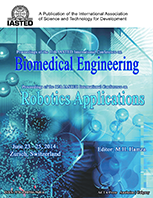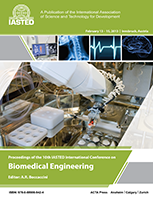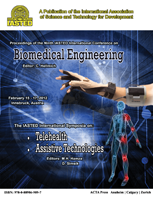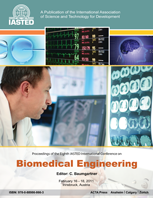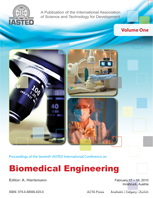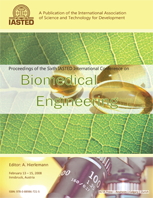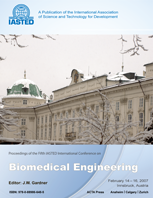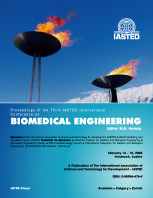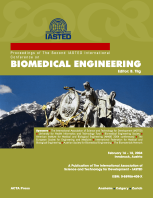The Seventh IASTED International Conference on
Biomedical Engineering
BioMed 2010
February 17 – 19, 2010
Innsbruck, Austria
PLENARY SPEAKER
The Biomechanics of Bone Augmentation
Abstract
Vertebroplasty, the percutaneous augmentation of vertebral bodies through the injection of a self-curing biomaterial, has proven to be a simple and effective method for the treatment of osteoporotic compression fractures. Short and long-term results are generally very good, with an immediate and lasting pain relief experienced by the majority of patients. Bone augmentation stabilizes and strengthens weakened or compromised bone and can be considered a minimally invasive treatment option to conventional metallic implants. The success of vertebroplasty for the treatment of osteoporotic vertebral fractures has prompted an increased interest in the extension of the method for the treatment of defects or fractures at other skeletal regions (e.g. distal radius, femoral neck) or the application of bone augmentation for the treatment of traumatic fractures in younger patients. As the indications for bone augmentation are extended, a thorough understanding of the biomechanical aspects of the augmentation process and the mechanical response of augmented bone is required.Bone augmentation is currently performed using either conventional polymeric (polymethylmethacrylate) bone cements, originally developed for joint arthroplasty but modified for the specific application by injection, or ceramic bone cements with their own unique rheological and mechanical properties. A challenge in the development of appropriate biomaterials for augmentation is the optimisation of the flow characteristics of such self-setting cements. In our own research, using experimental and computational models, we have characterised all aspects of the injection process and the significant dependence on the rheological properties of the cements, including: the setting response of the cement, the time-dependent viscosity, the injection performance of delivery devices, the pressurisation of the bone space, the non-linear flow characteristics of cements through porous media, phase-separation of cements, the risk of cement extravasation (leakage), the consequences of leakage and the design of improved injection equipment. This knowledge has been rapidly fed back into the improvement of the clinical practice.
Bone augmentation materials possess mechanical properties unique to those of the host bone. The degree of bone reinforcement and the mechanical response of the augmented and neighbouring structures depend heavily on the mechanical characteristics of the cement. An infrequent but nevertheless relevant risk associated with bone augmentation is the subsequent failure of surrounding bony structures, e.g. the fracture of adjacent, non-augmented vertebrae. With a combination of experimental and computational models we have demonstrated the changes to the normal load sharing within the anterior column of the spine following bone augmentation. This disturbed load transfer may provoke the observed fractures. Using advanced microCT imaging methods, we have shown that the internal deformations of the augmented and non-augmented bone structures are influenced by the type, volume and distribution of the injected bone augmentation material injected. Knowledge gained from these studies is being applied in the development of new biomaterials for augmentation to minimize the risk of subsequent fracture and, potentially, to help stimulate new bone formation at the augmentation site.
In summary, bone augmentation is a successful method for treating weakened or fractured bone. The success of the method depends heavily on the properties of the biomaterial, which influence both the mechanics of injection and the subsequent response of the augmented bone to mechanical loads. Biomaterials and delivery methods will continue to advance as the method of bone augmentation is applied for a broader range of indications.
Biography of the Plenary Speaker

Dr. Stephen Ferguson received his degree in Mechanical Engineering from the University of Toronto (Canada) in 1991 and was initially active as a consulting engineer in the iron and steelmaking field. He realigned his perspectives on the use of metal during his studies towards a Masters degree from Queen’s University (Canada) in 1994, with a focus on metallic and non-metallic implants for fracture fixation. His doctoral research on soft tissue mechanics and hip joint tribology was completed as a collaborative project between Queen’s University and the AO Research Institute in Davos. Following his PhD degree in 2000, he moved to the University of Bern where he leads the Biomechanics Division of the Institute for Surgical Technology and Biomechanics and is Co-Director of the ARTORG Spinal Research Center. The focus of his group’s research is to improve our understanding of the causes of spinal disorders and to develop new treatment methods by combining knowledge from biomechanics and mechanobiology. Dr. Ferguson is the author of over 60 scientific papers and 3 patent applications. He lectures on tissue biomechanics, spinal health and medical device design.






